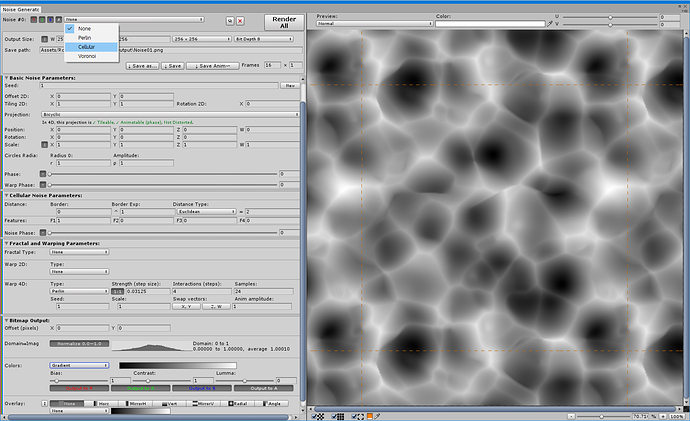Hello
I’m an “old-school” FX artist. Meaning I’ve been in the games industry for 25 years now and first worked with 3D FX in 1999. I do remember noise maps being an integral part of my work since ever (as well as particles).
Generating good maps was something of an art back then. The patterns, the right fall of, the subtle differences that made something look like lava instead of fire, etc. And, of course, tiling. Tileable maps where always an obstacle. Even by the time I settled in using Bercon Maps (a texture plugin for 3dsmax with a profusion of noise algorithms and parameters). Even then, the generated maps where not tileable, and I’d have to move then to photoshop and Offset their borders to the center and make my best with Healing tool or whatever to take away the split and any obvious pattern). I’ve thus always resented the lack of a “tile” or “wrap around” checkbox on whatever software I could put my hands on that generated noise maps.
I’ve not been directly involved in intense FX making for quite some time now, and recently, I came across the idea of generating noises in higher dimensional spaces and using revolution-projections (like, for instance, a torus) inside this space to sample a 2D map that’s fully tileable. I thus indulged myself in creating a tool inside Unity that does exactly that: generates tileable noise maps, using several algorithms (simplex, perlin, worley, voronoi, etc) and having several features, like distortion and fractal noise and so. Output map to disk, ready for use in FXs. Yay!
Here it is, after rendering a fully tileable (look at the dashed lines!) 256x256 cellular (Worley) map distorted by a perlin, in all its glory… Glory?
Then it just occured me: Aren’t tileable noise map tools plenty in 2021? Are static noise maps still a thing in 2021? I mean… I know some engines have their own real-time generators, but it’s not something we can afford in any situation… or can we do that?
I thus got a few questions for you FX artists:
-
Static noise maps: still a thing? On what do you use them?
-
What are you people using to make tileable noise maps for FX nowadays? Is it a common feature?
-
Assuming this is useful, what effect would you like to see being made with this?
-
Would you use such a thing?
-
Any noise algorithm you just happen to love?
PS: no, there are no nodes on it for now.
PS2: depending on the responses, I’ll consider releasing it. For now, it’s just a personal project.
